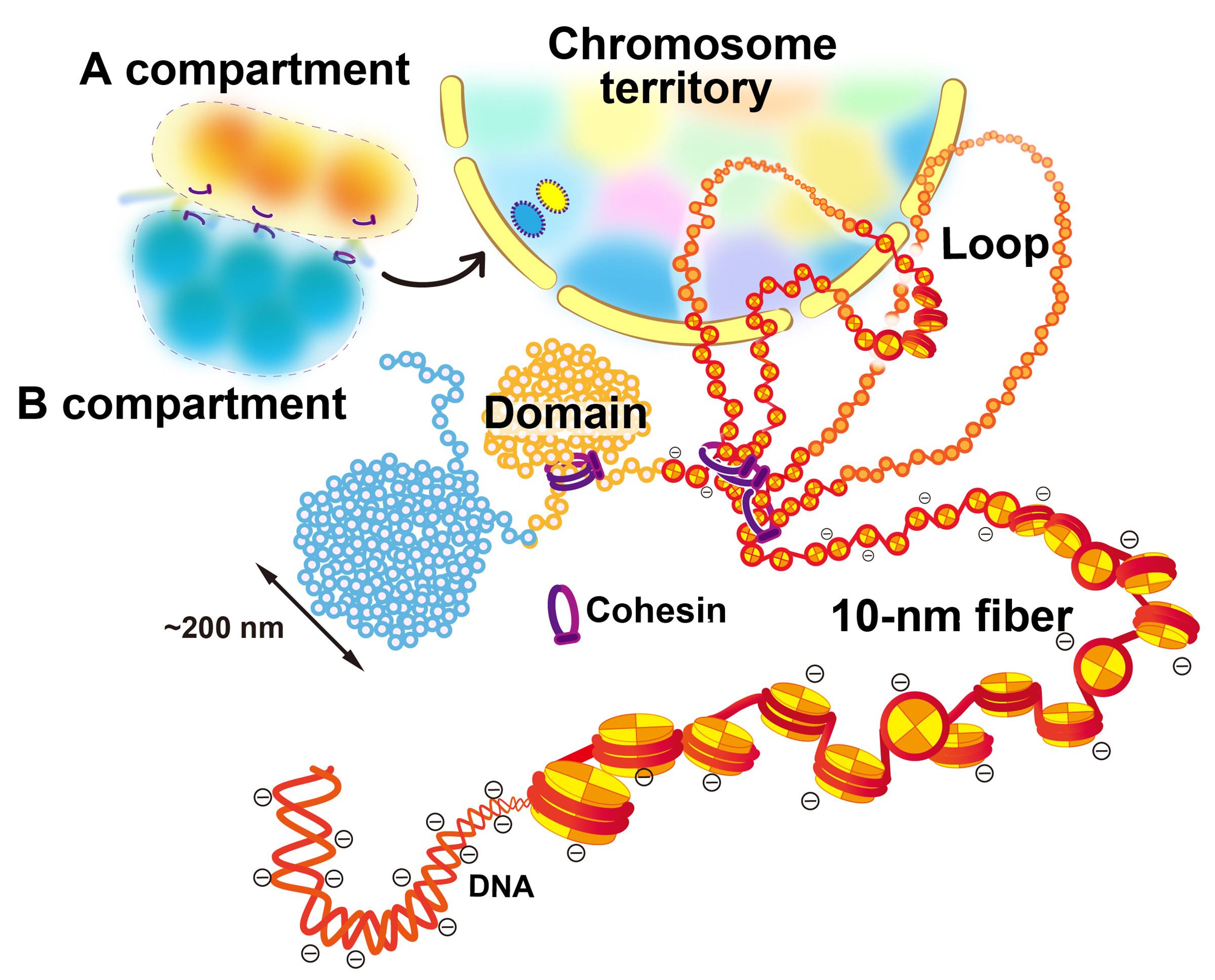Chromatin domains in the cell
Maeshima Group / Genome Dynamics Laboratory
Chromatin domains in the cell: phase separation and condensation
Shin Fujishiro*, Masaki Sasai*, and Kazuhiro Maeshima*
*Corresponding author
Current Opinion in Structural Biology Volume 91, April 2025, 103006 DOI:10.1016/j.sbi.2025.103006
Free download link for 50 days [Available online 20 February 2025]
Negatively charged genomic DNA wraps around positively charged core histone octamers to form nucleosomes, which, along with proteins and RNAs, self-organize into chromatin within the nucleus. In eukaryotic cells, chromatin forms loops that collapse into chromatin domains and serve as functional units of the genome. Since various factors—such as chromatin-binding proteins, histone modifications, transcriptional states, depletion attraction, and cations—can significantly impact chromatin organization, the formation processes of these hierarchical structures remain unclear. In this review paper, Shin Fujishiro (Kyoto Univ), Masaki Sasai (Kyoto Univ) and Kazuhiro Maeshima (NIG) critically discuss the formation mechanisms of the chromatin domain in the cell from a physical point of view, including phase separation and condensation.
This work was supported by the JSPS and MEXT KAKENHI grants (JP20H05936, JP22H00406, JP23K17398, and JP24H00061), and the Takeda Science Foundation.

Figure: Scheme for hierarchical chromatin organization inside the cell nucleus.
DNA is wrapped around histone octamer to make a nucleosome. The chain of nucleosomes is compacted into chromatin domains, which interact over long distances to form chromatin compartments. A and B compartments in general represent transcriptionally active or open chromatin state (compartment A) and inactive or closed chromatin (compartment B), respectively. A single interphase chromosome consists of several compartments occupies that collectively form a chromosome territory. Note that this scheme is highly simplified and a more complex organization can be possible inside the cell.















